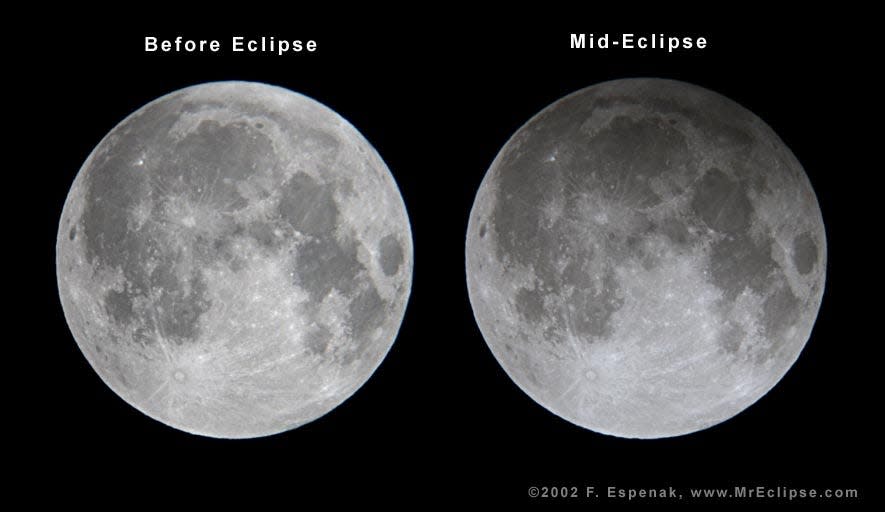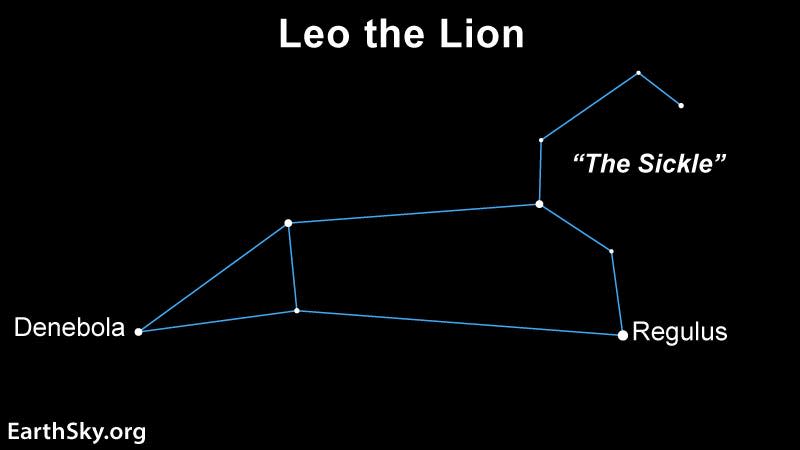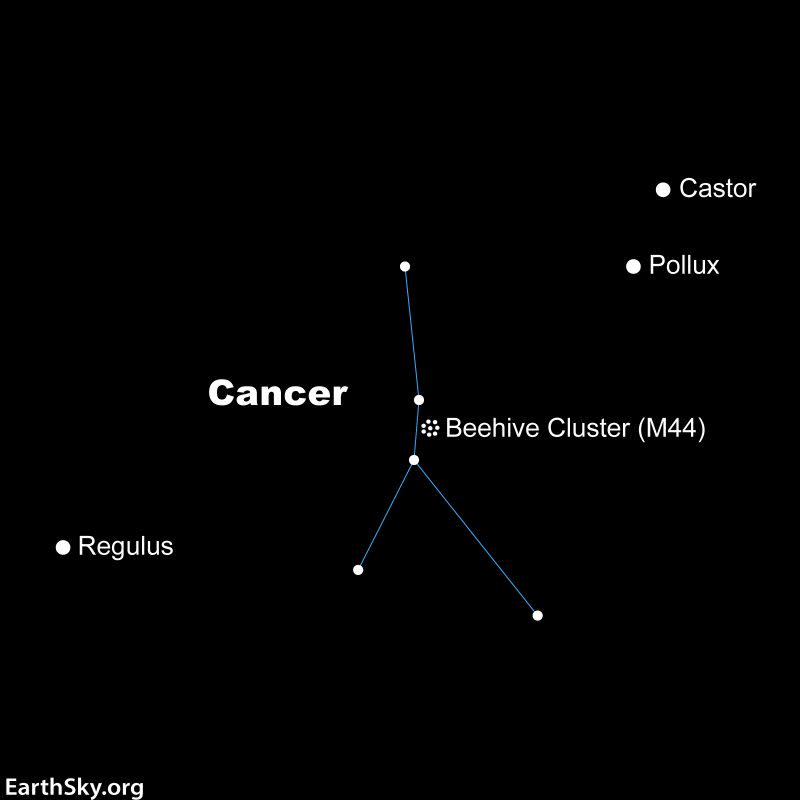Eclipse season starts with March 25 penumbral lunar variety

One of the many celestial seasons is coming up – eclipse season!
Eclipse season occurs twice each year when we have the perfect lineup of the sun, earth and moon or the sun, moon and earth, allowing eclipses to happen.
Due to the 5% tilt of the moon’s orbit from earth’s orbit around the sun, we do not have an eclipse every month. Each eclipse season lasts 35 days when two or possibly three eclipses can occur.
The cycle repeats every 173.3 days, or just less than six months.
The first eclipse season for 2024 will be in March and April. The first eclipse will be a penumbral lunar eclipse, set for March 25. During a penumbral eclipse, the moon passes through the outer, more diffused, part of earth’s shadow.
Earth is only blocking part of the Sun’s rays. It is not very dramatic and is hardly noticeable. The shadowed part of the moon is just a bit more faint than the rest of the moon. The timeline for this lunar eclipse is penumbral eclipse begins at 12:53 a.m., maximum eclipse is at 3:12 a.m. and the penumbral eclipse ends at 5:32 a.m.
The two other types of lunar eclipses are partial and total. During a partial lunar eclipse, a portion of the moon passes through the deep umbra shadow of earth. For a total lunar eclipse, the entire moon passes through earth’s umbra shadow. Any type of lunar eclipse is safe to watch with your human eyes. No safe solar glasses needed.
Two weeks later, at new moon, we will witness one of the grandest celestial events – a total solar eclipse – on April 8.
You should be completing your preparations for this event – where you will view and whether you have a safe method of viewing. Visit www.mckinleymuseum.org for important eclipse information and detailed maps of locations within the path of totality.
The second eclipse season will be September and October. A partial lunar eclipse will be visible in Canton on the night of Sept. 17-18. On Oct. 2, there will be an annular eclipse that will not be visible in Canton.

Night sky for March
One month until the Total Solar Eclipse! Stop by the Gift Shop at the William McKinley Presidential Library & Museum for your safe, certified solar glasses. Call the museum at 330-455-7043 for price and availability. When purchasing solar filter glasses, look for the international standard requirement code of ISO 12312-2.
Other important days in March include March 10, when we spring forward to Daylight Saving Time at 2 a.m.; and March 19, when spring begins at 11:06 p.m.
Planets and the moon:
Jupiter continues to dominate in the western evening sky. Each night, Jupiter drops lower in the sky. Jupiter sets five hours after sunset at the start of the month and three hours after sunset by month’s end. Jupiter starts the month at a brilliant -2.2 magnitude and pairs with the crescent moon on March 13.
At the beginning of March, Uranus is 8 degrees northeast of Jupiter and 3.5 degrees at month’s end. The crescent Moon joins Uranus and Jupiter on March 13. Binoculars could be helpful.
Mercury returns to the evening sky in the second week of March and makes its best appearance in 2024. Earliest views of Mercury, at magnitude -1.5, could be on March 9. Catch it 30 minutes after sunset, before it sets at 7 p.m. Mercury is southwest of the thin crescent moon on March 11. Binoculars will help to view the pair. By March 15, Mercury is visible one hour after sunset on the western horizon. By March 22, it is 6 degrees high and visible an hour after sunset. On March 24, Mercury will be at greatest eastern elongation at 19 degrees east of the Sun. After that, it drops from view.
Venus and Mars open the month less than 3 degrees apart but are very low in the eastern sky less than one hour before sunrise. Venus continues to shine brilliantly at magnitude -3.9. Mars is much dimmer. You will need binoculars to locate this pairing. Each morning Venus and Mars pull away from each other. The pair are joined by the moon on March 7-8.
Venus passes less than a degree north of Saturn on March 21. It may be difficult to see the duo, but binoculars could be useful. On March 31, Venus, Saturn and Mars line up along the ecliptic, spanning 17 degrees. Mars is brightening and rises first at 5:30 a.m. Saturn rises 20 minutes later. Then Venus rises 15 minutes later and is the last to be visible in the morning twilight, due to its bright magnitude.
Neptune is not visible this month.

Night sky spotlight:
As we head through late winter into early spring, the constellation that is the harbinger of spring, Leo the Lion, can be found climbing higher in the eastern sky each night. Look for the backward question mark shape or sickle. Leo happens to be one of the easier zodiac constellations to find in the night sky. People long ago looked forward to Leo returning to the night sky because it was a sign of warmer weather. The higher Leo climbs, the warmer the weather!
The bright star that looks like the period at the bottom of the question mark is Regulus. Regulus is the brightest star in Leo and 21st on the list of the top brightest stars. Regulus is often referred to as the heart of Leo and is a multiple system with at least four companion stars. It is the only first magnitude star located on the ecliptic, which is the path the Sun, Moon and planets use to cross through the sky. Due to Regulus’ location on the ecliptic, often, bright planets and the Moon pass close to this bright star.
Another pattern to look for in the constellation Leo is a triangle that makes up the hindquarters and tail of the mighty lion. Look to the left of the backward question mark. The brightest star in the triangle is Denebola, which is known as the lion’s tail.
Native Americans imagined Thunderbird in this star pattern. Thunderbird carried rain under its wings. When Thunderbird was high overhead, all of the water fell to Earth like the spring rains. So, they would know that it was time to plant.
For a binocular highlight, use Leo’s head as a guide to a beautiful open star cluster called the Beehive. The Beehive star cluster is an open star cluster and is made up of approximately 1,000 stars. Grab your binoculars and slowly scan to the right of Leo and enjoy!

Visit the Hoover Price Planetarium
Visit www.mckinleymuseum.org, for show dates and times! Planetarium shows are free with Museum admission. The Planetarium is located inside the McKinley Presidential Library & Museum, 800 McKinley Monument Drive NW in Canton. For more information, please call the museum at 330-455-7043.

This article originally appeared on The Alliance Review: Eclipse season starts with March 25 penumbral lunar variety

